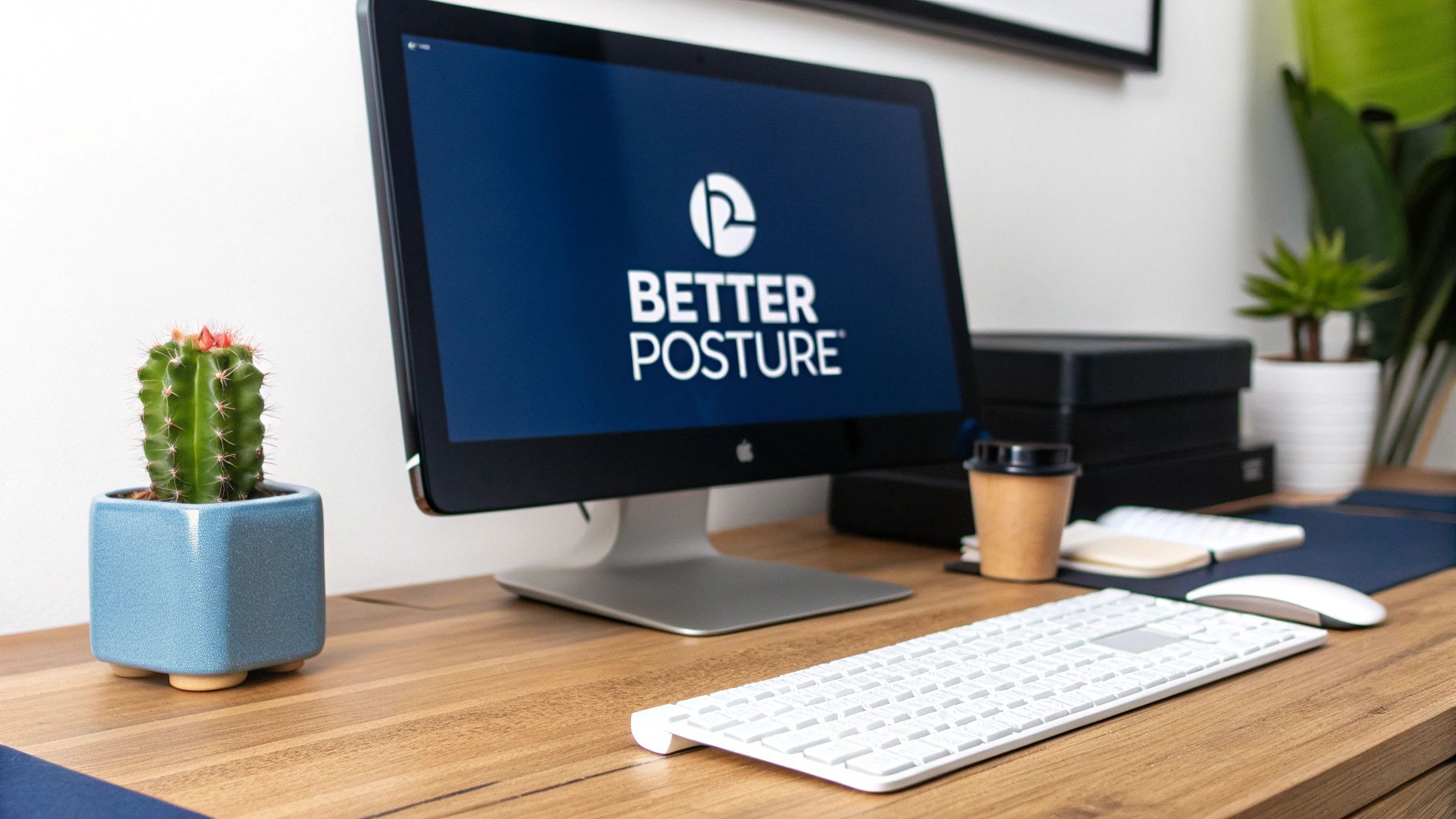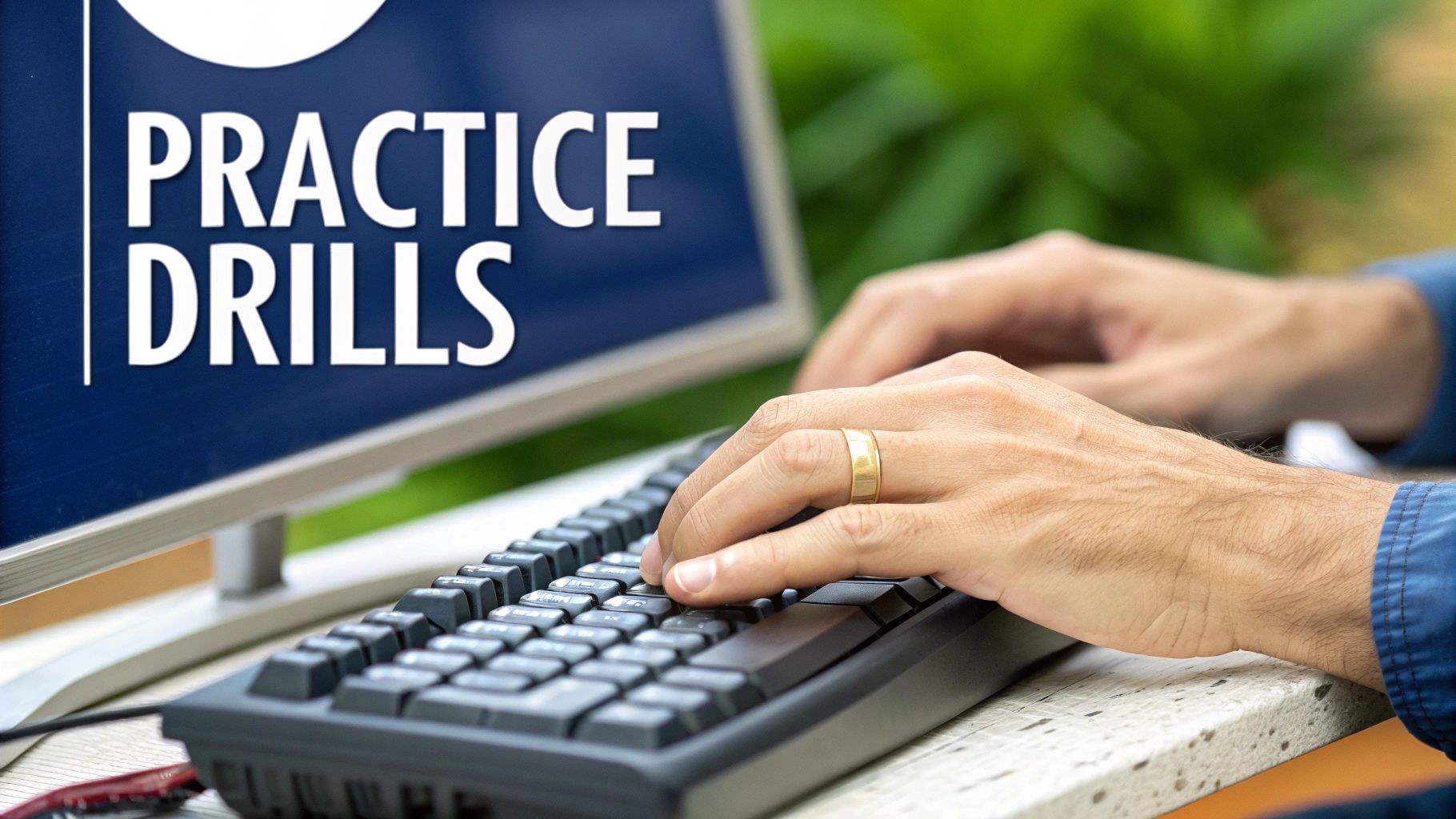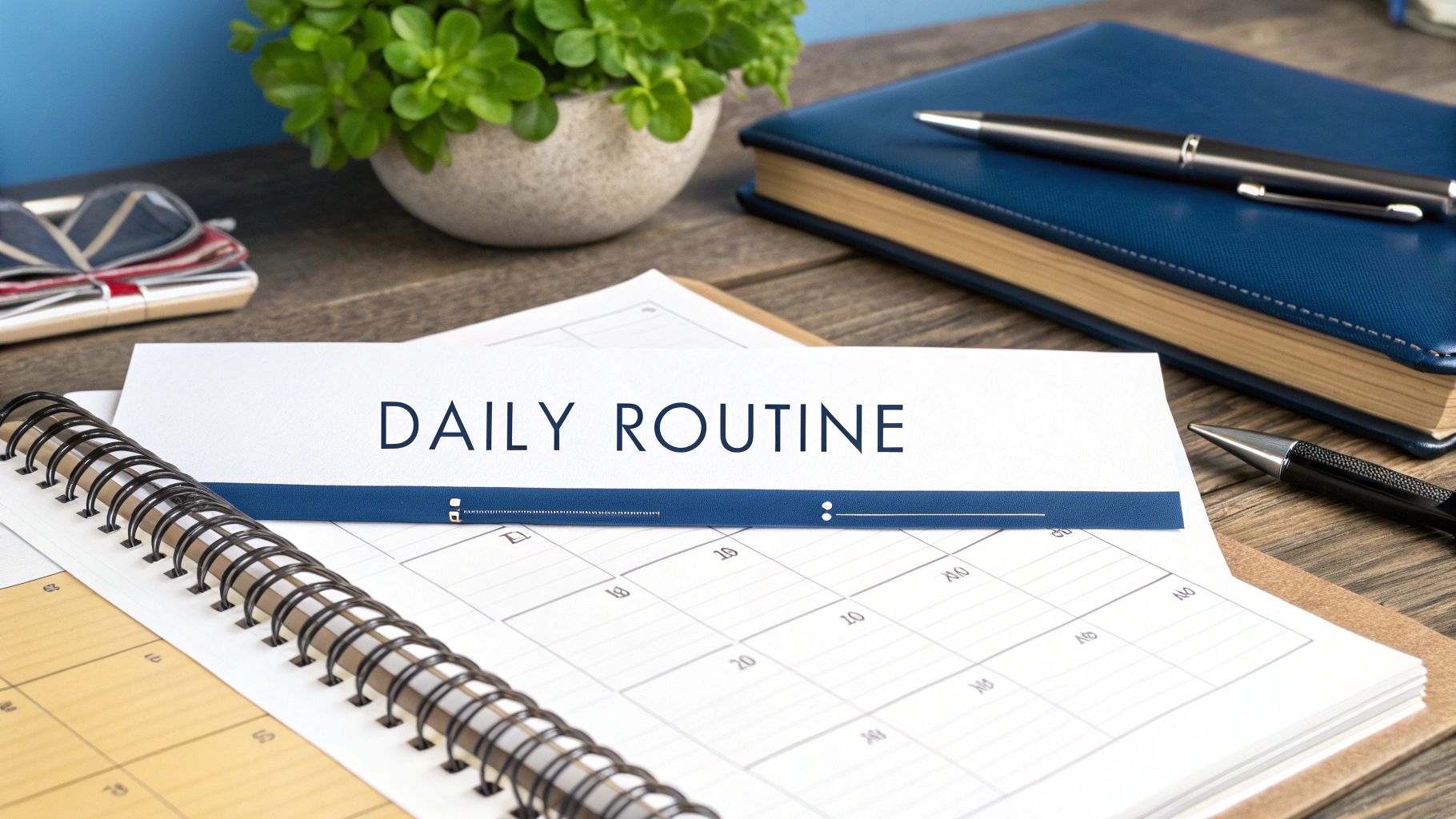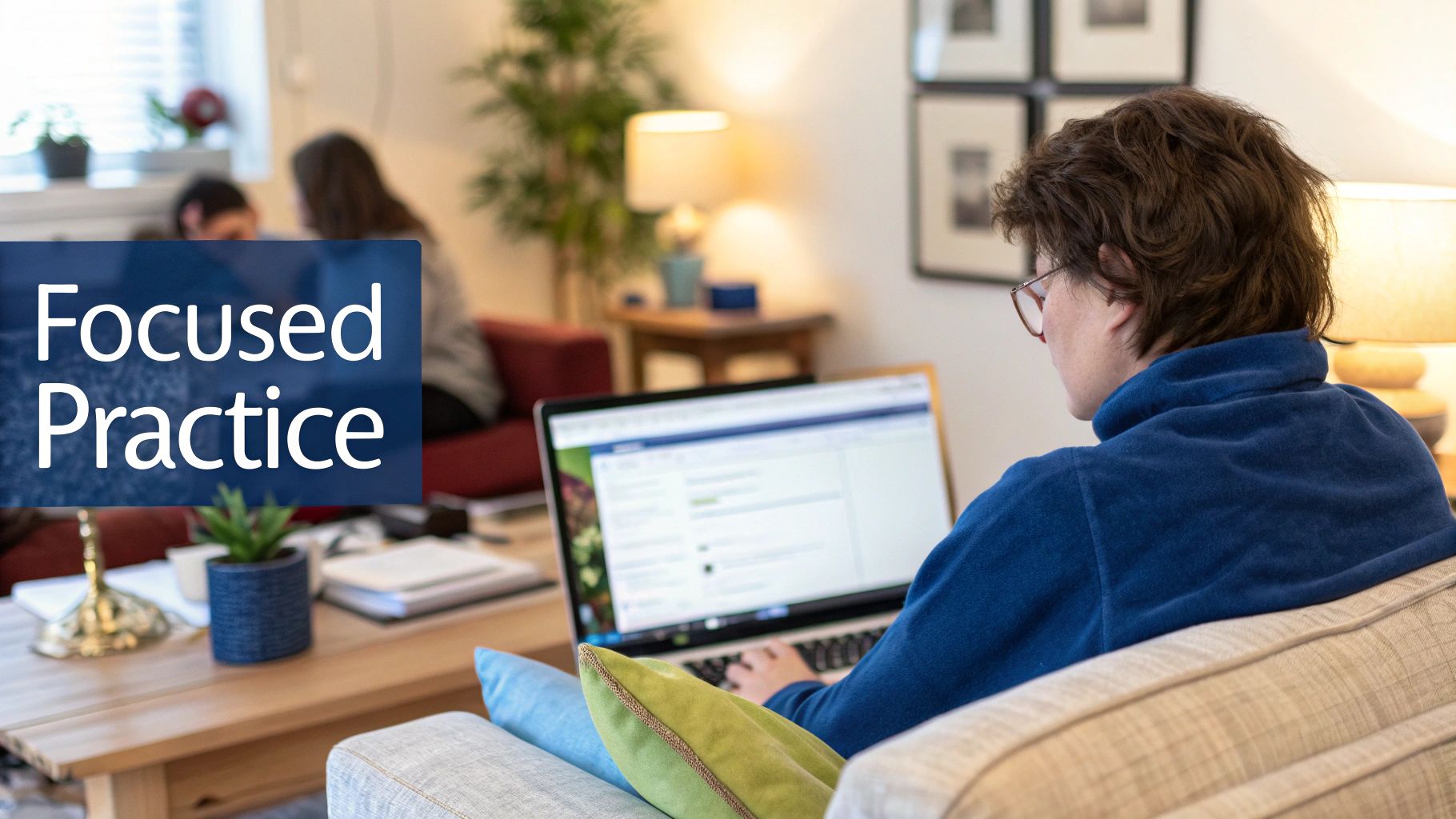How to Improve Typing Speed: A Science-Backed Playbook for Professional Performance
Understanding Your Current Speed and Setting Smart Goals
Getting better at typing starts with knowing exactly where you stand. Just as athletes track their performance metrics, understanding your typing proficiency gives you a clear foundation to build from. This involves looking at both your speed (words per minute/WPM) and accuracy - because fast typing filled with errors actually slows you down.
Assessing Your Typing Speed and Accuracy
You can easily check your current typing abilities using free online typing tests. These tests ask you to type a passage of text and then provide your WPM score along with accuracy percentage. Getting a baseline measurement - like 40 WPM with 90% accuracy - helps you track improvements over time. Many testing platforms also show additional metrics like typing consistency, which reveals how steady your speed remains throughout the test.
Setting SMART Goals for Improvement
After establishing your baseline, create SMART goals - Specific, Measurable, Achievable, Relevant, and Time-bound. Rather than a vague goal like "type faster," set a clear target. For example: "Increase typing speed from 40 WPM to 60 WPM in three months while maintaining 95% accuracy." This gives you a concrete goal to work toward within a specific timeframe.
Speed isn't everything though. If you focus only on typing faster without considering accuracy, you'll waste time fixing mistakes. That's why it's important to include accuracy targets in your goals. For instance, aim to keep 95% accuracy as you work on increasing your WPM. This ensures you're developing both speed and precision.
Realistic Expectations and Maintaining Motivation
Remember that major improvements take time - you won't double your typing speed overnight. Like learning a musical instrument, becoming a better typist requires consistent, focused practice. Research shows that using all ten fingers leads to much higher speeds compared to typing with just a few fingers, highlighting why proper technique matters so much.
To stay on track, break your main goal into smaller milestones. Celebrate when you hit these mini-goals to keep your motivation high. Mix up your practice routine with different typing exercises and games - this makes practice more fun while helping you improve specific skills like mastering tricky key combinations or building speed with certain finger movements. By steadily tracking your progress, celebrating small wins, and adjusting your approach when needed, you'll make consistent progress toward your typing goals.
Mastering the Science of Touch Typing

Becoming a faster, more accurate typist requires more than just setting goals and tracking your current speed. The key to real improvement lies in understanding and practicing touch typing - a proven method that helps typists achieve significantly higher speeds while maintaining accuracy. Let's explore why the ten-finger method consistently outperforms other approaches and examine the practical techniques that make it so effective.
Why Touch Typing Reigns Supreme
While typing without looking at the keyboard may seem challenging at first, touch typing follows basic principles of efficiency and muscle memory. Just as pianists play complex pieces without watching their hands, touch typists develop an instinctive feel for key locations, allowing them to focus entirely on content rather than finger placement. Research shows the clear advantages - touch typists average around 54 words per minute, while those using just a few fingers typically reach only 40 WPM. This significant gap demonstrates why engaging all fingers leads to much better results.
Hand Positioning and Finger Movement: The Foundation of Speed
The core of effective touch typing starts with proper hand placement. Your fingers should rest gently on the home row keys (ASDF JKL;) with slightly curved wrists to minimize strain. Each finger covers a specific zone of keys, with index fingers handling more keys than pinkies based on natural dexterity. This systematic approach creates smooth, efficient typing motions - imagine your hands working together like a well-coordinated team, each finger knowing exactly where to go.
Transitioning from Hunt-and-Peck: Overcoming Challenges
Making the switch from hunting for keys to touch typing often feels awkward initially. Your speed may temporarily decrease as you build new muscle memory - this is completely normal. The key is to resist falling back into old habits, especially when under pressure. Start by practicing touch typing with simple tasks like emails or short messages. Breaking practice into focused 15-minute sessions helps prevent frustration while steadily improving specific skills like certain key combinations or accuracy with particular fingers.
Practical Exercises for Building Muscle Memory
Beyond understanding the method, consistent targeted practice is essential for developing true muscle memory. Many online typing tutors offer structured lessons with engaging exercises and real-time feedback. As you improve, challenge yourself with different types of text and gradually increase difficulty levels. Regular practice not only strengthens muscle memory but also builds overall typing proficiency. By maintaining focused, consistent practice sessions, you'll steadily progress toward your speed and accuracy goals.
Building Speed Through Strategic Practice

While touch typing forms the foundation for efficient typing, real speed comes from focused, strategic practice. Simply repeating the same drills over and over won't cut it. The key is understanding how to practice effectively by first mastering accuracy, then gradually building speed while maintaining precision.
Prioritizing Accuracy Over Speed: A Foundation for Improvement
Fight the urge to type as quickly as possible when starting out. Research shows that focusing on accuracy early leads to fewer mistakes later, resulting in more consistent and ultimately faster typing speeds. Think of it like learning a musical instrument - you don't start by playing at full tempo. Instead, you master each note precisely before increasing speed. The same principle applies to typing. While your initial words per minute may be lower, you're building habits that will enable greater speed in the future.
Identifying and Targeting Weaknesses: Personalized Practice for Maximum Results
Pay close attention to specific challenges as you practice. Do certain key combinations trip you up? Are there patterns in your typing errors? By pinpointing these trouble spots, you can create targeted exercises to address them directly. For example, just as a basketball player analyzes their free throw technique to improve accuracy, you can examine your typing patterns to identify and correct weak points. This focused approach yields better results than generic practice drills.
Engaging Practice Techniques: Making Improvement Enjoyable
Practice doesn't need to be boring. Mix things up with typing games, speed tests, and fun exercises like typing song lyrics - all while maintaining proper technique. Many online typing tests provide detailed feedback on your speed, accuracy and consistency throughout a session. This helps identify when your performance dips so you can work on maintaining steady typing speeds. Online platforms also offer structured practice plans for different skill levels, helping you progress systematically without feeling overwhelmed. By combining targeted practice with engaging activities, you can make the learning process more enjoyable while steadily building your typing speed.
Optimizing Your Typing Environment for Peak Performance
Getting faster at typing requires more than just practicing finger movements. The physical setup where you type makes a huge difference in your speed and comfort. Everything from your posture to your keyboard choice affects how efficiently you can type. With some thoughtful adjustments to your workspace, you can create conditions that help you type both faster and more comfortably.
Ergonomics: Setting the Stage for Comfortable Speed
Good posture and proper equipment positioning are essential for typing efficiently. Start with a supportive chair that keeps your feet flat on the floor - this creates a stable foundation for typing. Place your keyboard directly in front of you with your elbows at 90 degrees to minimize strain on your wrists and arms. Position your monitor at arm's length with the top edge at or slightly below eye level. This setup prevents neck pain and eye strain, making it easier to maintain focus during long typing sessions.
Keyboard Selection: Finding the Right Fit for Your Fingers
Different keyboards can significantly impact your typing experience. While basic membrane keyboards work fine, many typists find that mechanical keyboards offer better feedback and control. The distinct click and tactile response of mechanical keys helps you feel exactly when each keystroke registers, potentially reducing errors. Since mechanical keyboards come with various switch types, you can choose one that matches how you naturally type. Testing different keyboards often reveals which style helps you type most comfortably and accurately.
Minimizing Distractions and Maintaining Focus
Background noise and visual clutter can break your concentration and slow your typing. Keep your desk organized and free of unnecessary items that might catch your eye while typing. Consider using noise-canceling headphones in busy environments to help maintain your typing rhythm. A clean, quiet workspace lets you focus fully on building speed and accuracy without constant interruptions.
Customizing Your Setup for Peak Performance
Fine-tuning your keyboard settings provides another way to boost typing efficiency. Adjust key repeat rates and delays to match your natural typing cadence. For instance, speeding up key repeat rates can help with tasks like deleting text, while shorter delays improve typing repeated characters. Learning keyboard shortcuts eliminates unnecessary mouse movements, keeping your hands on the home row more consistently. Small adjustments like these add up to meaningful improvements in your overall typing speed and workflow efficiency.
Advanced Techniques for Breaking Speed Barriers

Now that we've covered the basics of touch typing and practice strategies, let's explore advanced techniques that expert typists use to achieve exceptional speeds. These methods focus on building precise finger control, maintaining peak mental focus, and mastering challenging key combinations through targeted practice.
Developing Finger Dexterity and Rhythm
Just like a pianist practicing scales, developing smooth finger movements requires focused training beyond just knowing key locations. The key is teaching each finger to move independently with precision and control. Try exercises that target specific finger pairs - for instance, alternating between your index and middle fingers across different keyboard rows. Adding a metronome while practicing helps establish a steady, natural rhythm that reduces mistakes from irregular timing. Over time, this consistent practice builds the muscle memory needed for fluid typing at higher speeds.
Maintaining Flow State: The Key to Effortless Speed
The fastest typists describe entering a state of deep focus where their fingers seem to float effortlessly across the keys. Creating the right environment is essential for reaching this level of performance. Start by eliminating distractions - silence notifications, clear your desk, and ensure you're sitting comfortably. Then work on the mental side: try visualizing words before typing them, or practice with texts that genuinely interest you. This combination of physical comfort and mental engagement helps achieve that effortless flow where your fingers naturally keep pace with your thoughts.
Mastering Challenging Key Combinations and Patterns
Every typist has certain letter combinations that slow them down. The key is identifying your specific trouble spots and tackling them head-on. For example, if you regularly stumble over "th" or "qu" sequences, design short practice sessions focusing just on those patterns. Work with common words containing these combinations until your fingers handle them smoothly. This targeted approach, similar to an athlete drilling specific techniques, is much more effective than generic practice. As you overcome these small hurdles, you'll see your overall typing speed increase naturally.
Advanced Drills and Practice Patterns
To keep improving beyond basic proficiency, you need varied and challenging practice routines. Mix up your training by working with different types of text - switch between regular prose, programming code, and number-heavy content to build versatility. Include timed tests with accuracy goals to develop speed while maintaining precision under pressure. This kind of diverse practice helps prevent plateaus by constantly presenting new challenges to your typing skills. The result is improved performance across all typing situations, from casual emails to intensive work sessions.
Measuring Success and Maintaining Progress

Getting better at typing requires regular practice, but it's crucial to know if your efforts are paying off. Just as athletes track their training results, you need to monitor your typing performance and adjust your approach based on real data. Let's explore practical ways to measure your typing speed progress, understand what the numbers mean, and keep yourself motivated as you work toward faster typing.
Tracking Your Typing Speed: More Than Just Words Per Minute
While tracking words per minute (WPM) is important, it's only part of the story. Your accuracy rate and the specific types of mistakes you make provide key insights into where you need to focus. For example, if you type quickly but make many errors, slowing down to build precision will lead to better results in the long run. This mirrors how musicians master difficult pieces - starting slowly and building speed on a foundation of accuracy. Current data shows that male millennials average 56.5 WPM and females 55 WPM, but raw speed without accuracy isn't the goal.
Utilizing Typing Analytics to Identify Patterns and Adjust Practice
Modern typing tests offer detailed insights beyond basic speed metrics. These tools can show which letter combinations slow you down and where errors commonly occur. With this specific data, you can create focused practice sessions that target your weak points. For instance, if you consistently stumble over certain key combinations, spending time drilling those specific patterns will improve your overall typing speed more effectively than general practice.
Setting Benchmarks and Milestones for Continued Motivation
Breaking down your typing goals into smaller, achievable steps helps maintain momentum. Rather than fixating on reaching 100 WPM immediately, set progressive targets like improving by 5 WPM each week or maintaining 98% accuracy for five consecutive typing tests. Each small win builds confidence and keeps you engaged in the learning process. Remember that even modest gains of a few words per minute represent real progress toward your goals.
Staying Motivated: Long-Term Strategies for Typing Improvement
Improving your typing speed is a gradual process that requires patience. When you hit plateaus or feel frustrated, find ways to make practice engaging. Try typing games, challenge friends to friendly competitions, or set personal goals with rewards. Working with a practice partner can provide accountability and make the journey more enjoyable. Remember that like any skill worth developing, becoming a faster typist takes dedicated effort over time. By combining consistent practice with thoughtful analysis of your performance, you'll steadily build toward your typing speed goals.
Boost your productivity and streamline your workflow with Whisperit, the AI-powered dictation and text editing platform. Experience the future of document creation and management. Visit Whisperit today!